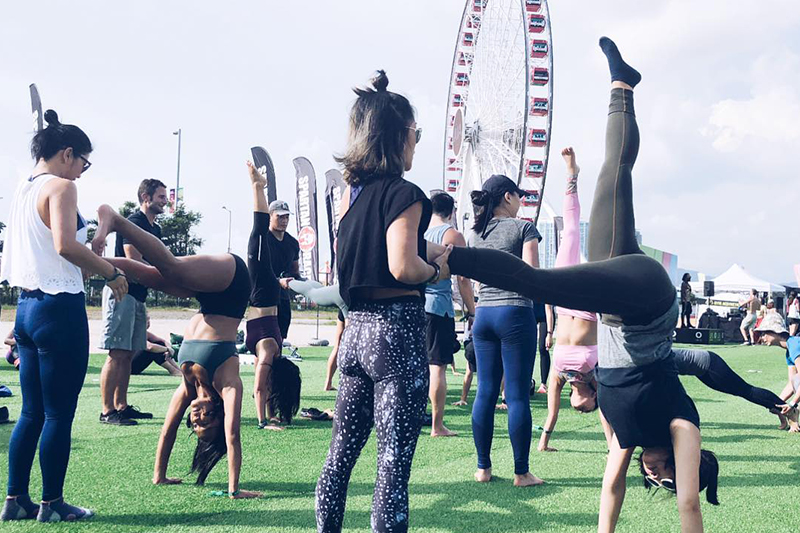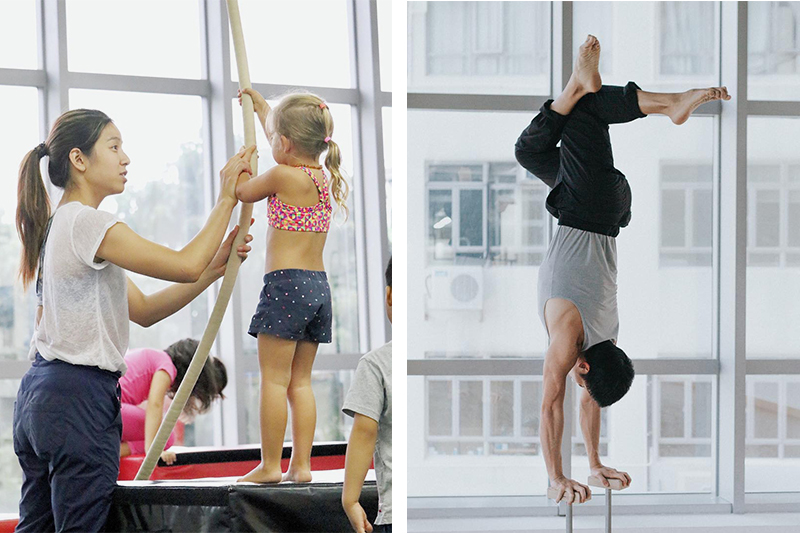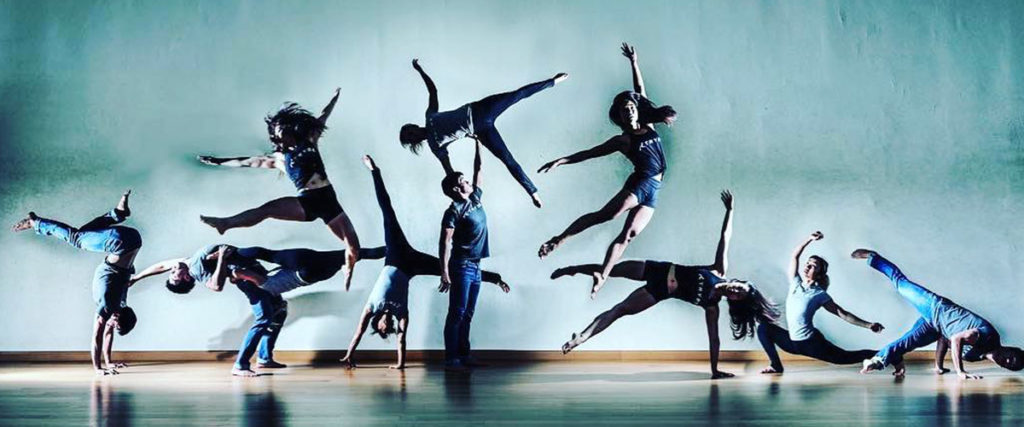Steph Lee, Co-Founder of Hong Kong gym Trybe, wants to get grown adults doing headstands and circus acts in a bid to improve their mental and physical fitness.
Founded in 2017, Trybe’s 3500-square-feet movement playground in Wong Chuk Hang isn’t your typical gym packed to the brim with weights and machines. Instead, they offer up something truly valuable in Hong Kong’s densely populated city – space. “The core tenet of our philosophy is giving space for people to train in whatever they want, whenever they want,” says Co-Founder Steph Lee. “Traditional gyms always talk about achievements and don’t focus on fitness holistically. And, if you’re not having fun, why do it at all?”

To deliver on those central tenets of fun alongside a truly 360º transformational approach, Trybe asks their clients to try something new, offering everything from dance to tumbling, acrobatics to weightlifting and gymnastics, for all ages and all under one roof. Whether you’re in your teens or your 60s, all they ask is that you give their more ‘out there’ classes a try – no matter how unattainable they may seem. “The main misconception of the things that we do here, such as circus acts, gymnastics or handstands, is that they are really difficult,” says Steph. “But, in fact, the barrier to entry is really low. If you want to get good, you just need time. You might look like a fool at first, but you will have fun. We’re not about what you have when you walk in. It’s more about what you leave here with.”
You might also like Female Fitness Warrior Talks Strength, Resilience & Career After Battling Cancer

Steph feels that what they have built at Trybe goes beyond the function of a gym and into the realm of a community, with the biggest benefit clients gain from sessions there being a shift in mindset over a change in physique. “Well-being and health are really achievement-based. I try to shift that mindset at Trybe. We are all about learning skills and looking at those as a marker of growth, as opposed to changes in the body,” she explains. “A lot of our students would rather learn how to do a backflip than get a six-pack. The bodily changes just become a natural byproduct of the skills they learn.”

After getting drawn into the fitness industry at the age of 16 through working at a ballet company, Steph has honed her craft for 28 years. She’s taught fitness in the States before returning to Hong Kong to launch her own venture. Having started Trybe, she now aims to cultivate a community of like-minded individuals with a great attitude towards fitness and life. “People in fitness generally want the best for their clients,” she says. “They are open-minded and willing to learn new things. If there’s new research that throws their 20 years of anatomy knowledge out of the window, they’ll pay attention to what you have to say.” With the rise of fitness technology, she feels the future will be dominated by these smart devices as people start viewing fitness holistically instead of just aesthetically. “I see a lot more people wanting to become more well-rounded. It’s not just about diet or exercise. I’m starting to see people take care of sleep and stress. People are starting to move away from quick fixes.” And, as far as she’s concerned, if they do that, the benefits are huge and go way beyond physical ability. “We teach people to reframe their mindset. Not having the ability to try new things limits you. Physical limitations such as flexibility are usually not permanent; a lot of people mistake sensation for pain. But, if you feel something different, it doesn’t mean it’s pain. I want people to reframe their physical limitations and view them as a temporary challenge. My advice, if you are just trying out aerial arts for the first time, is to try everything! Don’t give up yet. You don’t have to be good at it. Just enjoy it!”
Related Articles
The Female MMA Fighter Who Risked It All To Go Professional
ClassPass: An Exercise in Success
One Man’s Journey: Changing How We Talk About Men’s Mental Health





